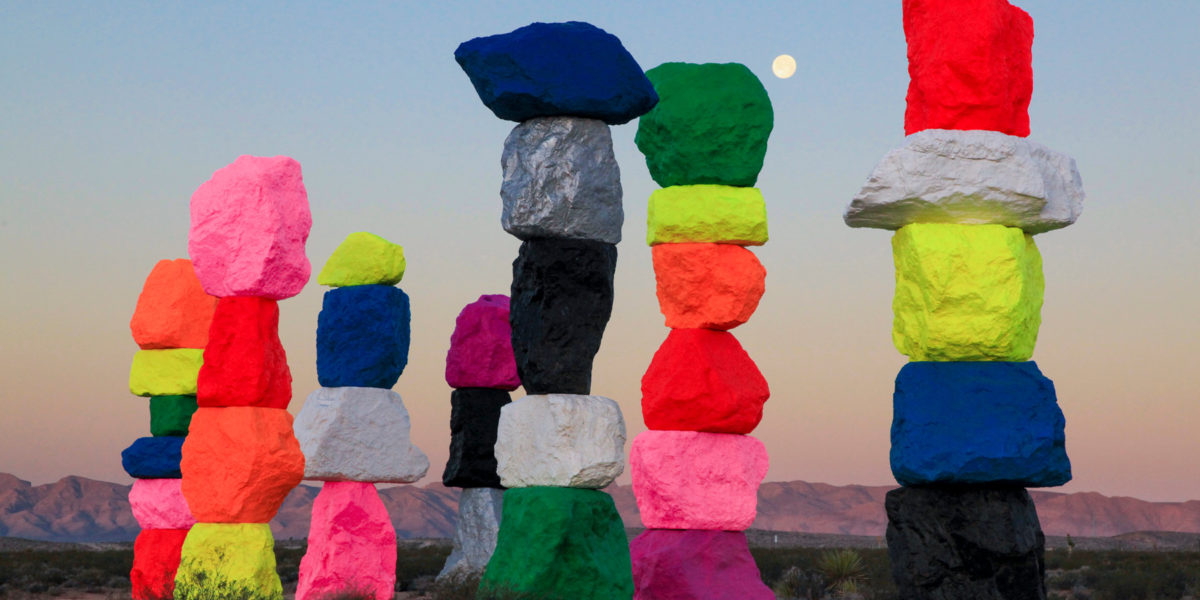
Land Art: Ambitious installations as epic as the landscapes they inhabit
The mountain and desert states of the West are home to wide-open spaces, some of the most spectacular scenery in-country, and wonderful national parks. But while we admire intricate spires, otherworldly sandstone formations and giant canyons carved by force and water over millions of years, these same states also offer some incredible, colossal man-made monuments, known as Land Art.
While the largest such undertaking, James Turrell’s Roden Crater, is nearing its completion in the Arizona desert, plenty of other monumental Land Art Installations are ready to be experienced right now.
What exactly is Land Art? Born out of curiosity and the need to break the norm, such daunting art projects are nurtured by passion and dedication, often take years to complete, are huge in scale and can be found in the middle of nowhere. Their remote location allows them to interact with nature, sunlight and night skies in the most optimal way, void of any noise or light pollution. They inspire and invite us to become part of the space.
We encourage you to visit and discover some of them next time “the road comes calling”.
Double Negative, Nevada
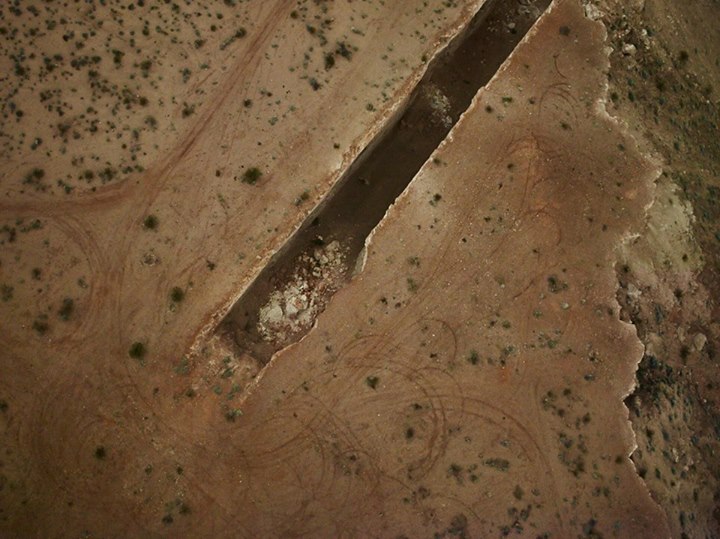
Michael Heizer’s Double Negative (Credit: Zach Alan)
Contemporary American land artist Michael Heizer said of his 1970 work Double Negative, “There is nothing there, yet it is still a sculpture,” and he wasn’t exaggerating. Composed of two long trenches measuring 30 feet wide and 50 feet deep cut into Nevada’s Mormon Mesa near Overton. The work is more a commentary on what has been removed from the site – that is, the negative space created by the trenches – than what the work actually appears as. Double Negative can only be accessed by four-wheel drive.
Spiral Jetty, Utah
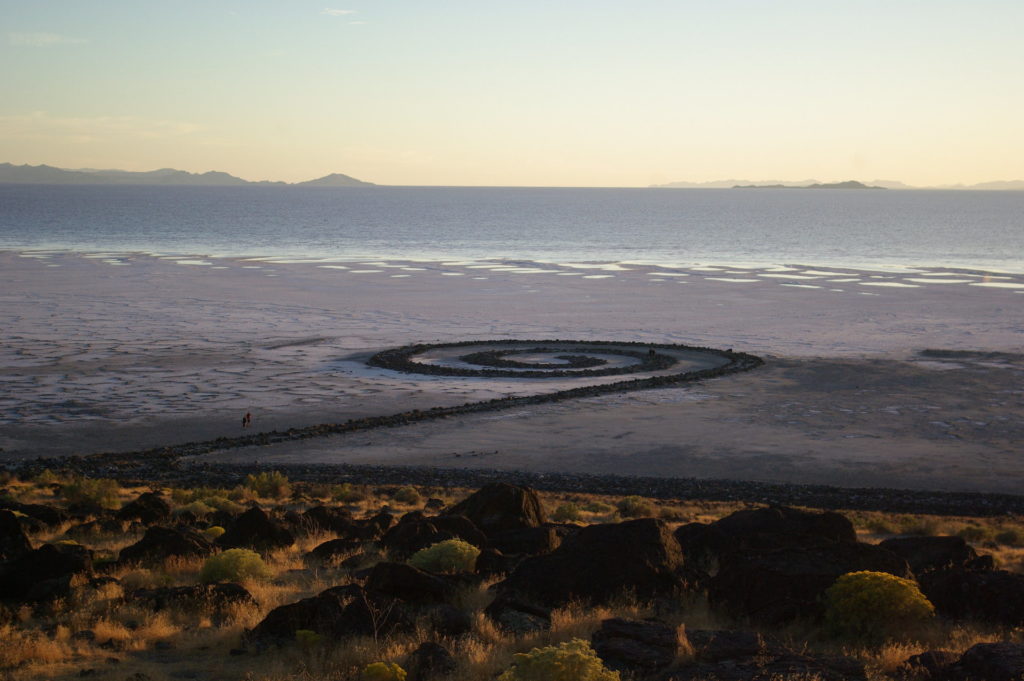
Robert Smithson’s Spiral Jetty in Utah’s Great Salt Lake (Credit: Kevin Gaughan)
Late artist Robert Smithson’s colossal work of Land Art is a 15-foot wide path that reaches outward, then coils into itself,1,500 feet long in the Great Salt Lake, Utah. Constructed in 1970 near Rozel Point, the path was built with more than 6,000 tons of black basalt rock. The Spiral Jetty is periodically submerged by rising water levels, before regional droughts allow it to resurface, during which times visitors may circle along the path.
Seven Magic Mountains, Nevada
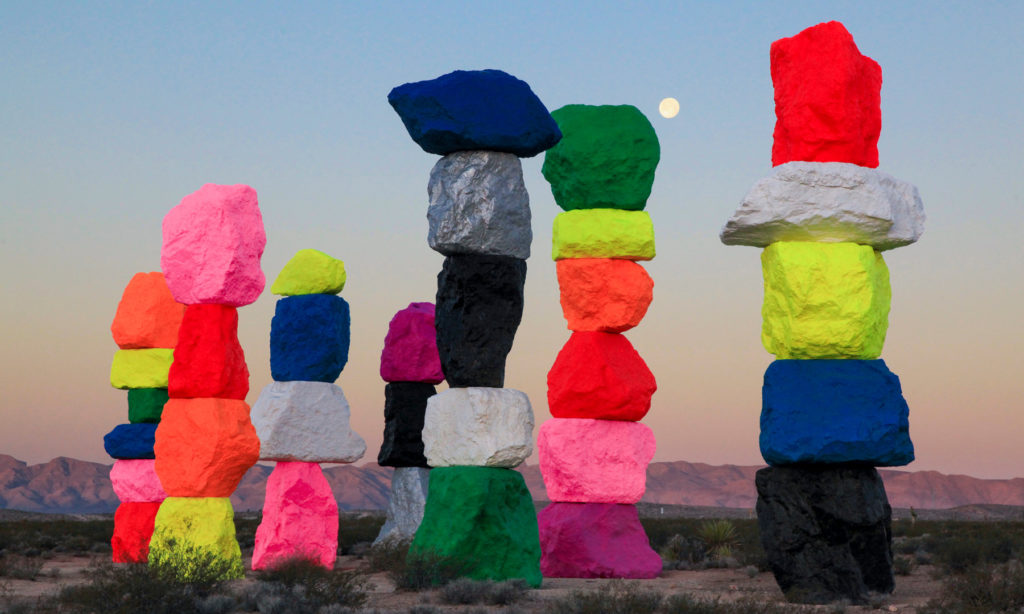
Ugo Rondinone’s Seven Magic Mountains
Swiss artist Ugo Rondinone’s Seven Magic Mountains is a large-scale, site-specific public art installation located near Las Vegas, Nevada. Seven towers of colorful, stacked boulders standing more than thirty feet high punctuate the Mojave with a burst of form and color. The creative expression of human presence in the desert will be on view through May 2018.
Sun Tunnels, Utah
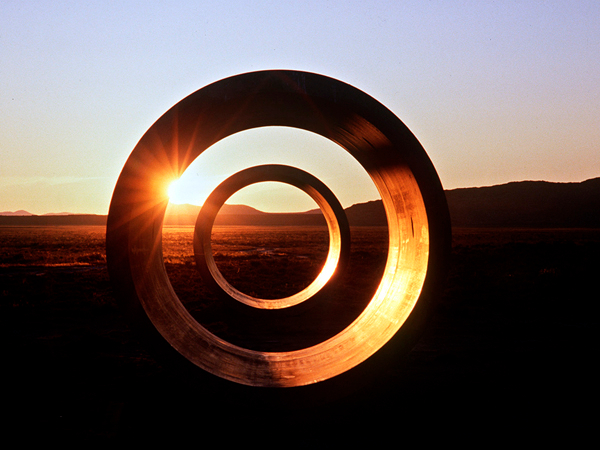
Nancy Holt’s Sun Tunnels in Utah (Credit: Al Hartmann)
Four enormous tunnels laid opposite each other in an “X” formation, are the late Nancy Holt’s work of Land Art in the Utah desert. Each tunnel is 18 feet long and nine feet in diameter, pierced with holes of irregular size arranged according to certain constellations: Capricorn, Columba, Draco and Perseus. These holes shed pinpricks of light on the otherwise dark interiors of the tubes, shifting along with the daylight. The tunnels are perfectly aligned to watch the rising and setting sun as well as the summer and winter solstices.
The Lightning Field, New Mexico
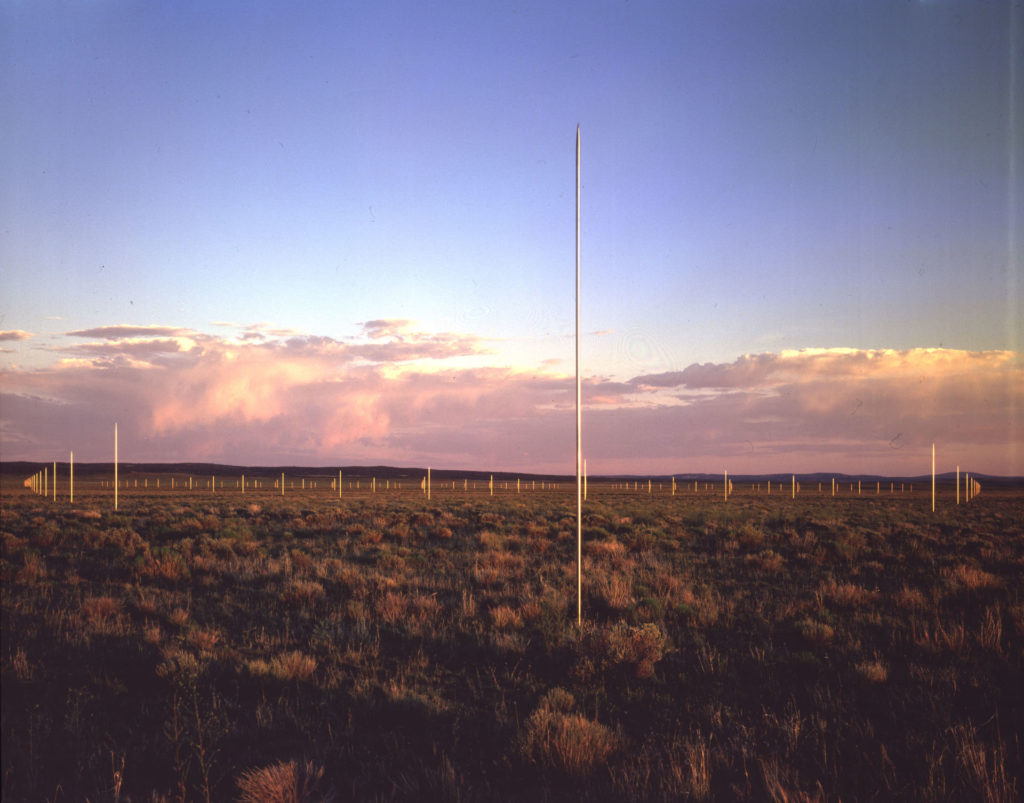
Walter De Maria’s Lightening Field in New Mexico (Credit: Joh Cliett, Dia Art Foundation)
In 1977, Walter De Maria dotted a barren remote area in the western New Mexico desert with 400 stainless steel poles. The two inches in diameter and over 20 feet high poles are situated in columns and rows equidistant from each other, in a grid that’s a mile wide and a kilometer long. Though the pointed tips atop each pole do invite electrostatic discharge, the enjoyment of the work does not depend on lightning striking.
Untitled Works in Concrete, Texas
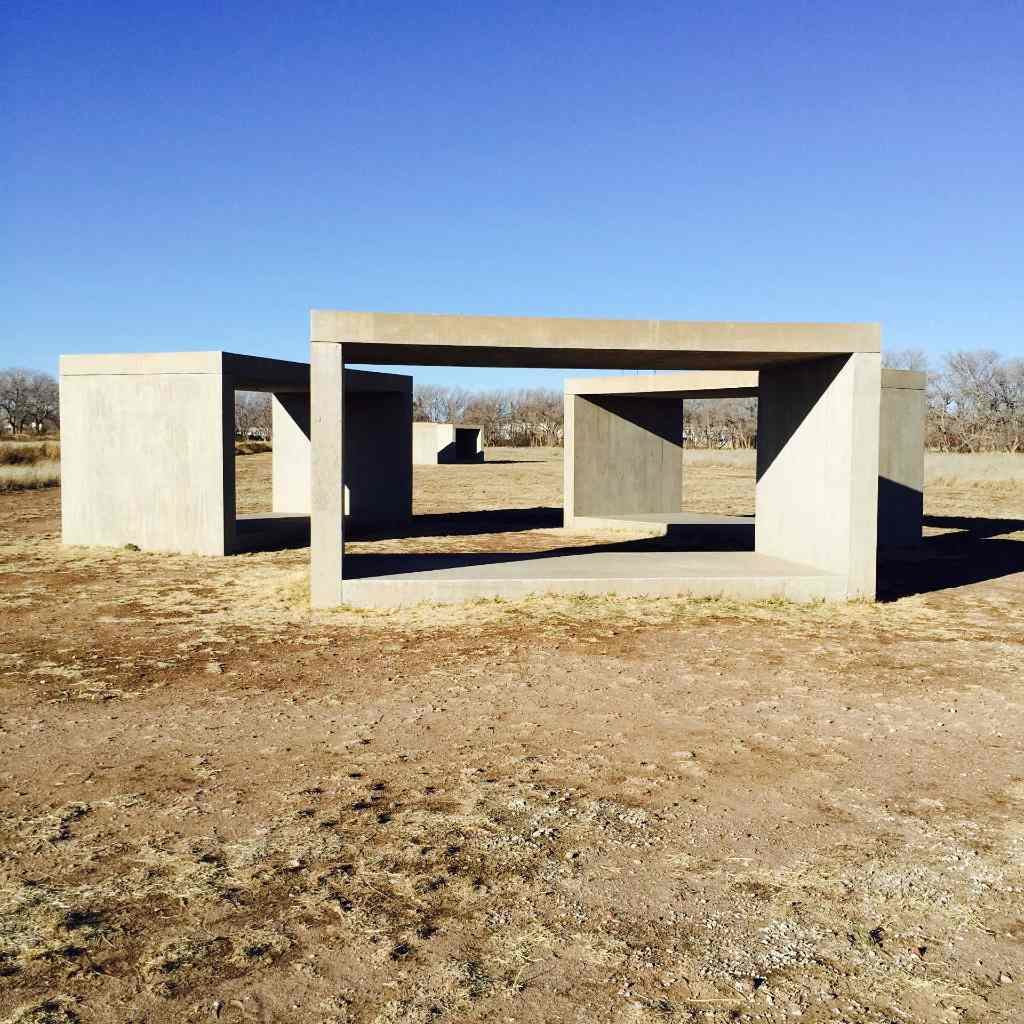
Donald Judd’s Untitled Works in Concrete at the Chinati Foundation
In the 1970s, minimalist artist Donald Judd moved to Marfa, Texas, where he created giant works of art that bask beneath vast desert skies. The fifteen concrete works, that are as empty and remote as the landscape, were scattered in the scrubby pasture. They were cast and assembled on the site over a four-year period, from1980 through 1984. The individual units that comprise each work have the same measurements and are made from concrete slabs that are each 25 centimeters thick.They were the first works to be installed at a site that has since morphed into a museum, the Chinati Foundation in Marfa, Texas.
